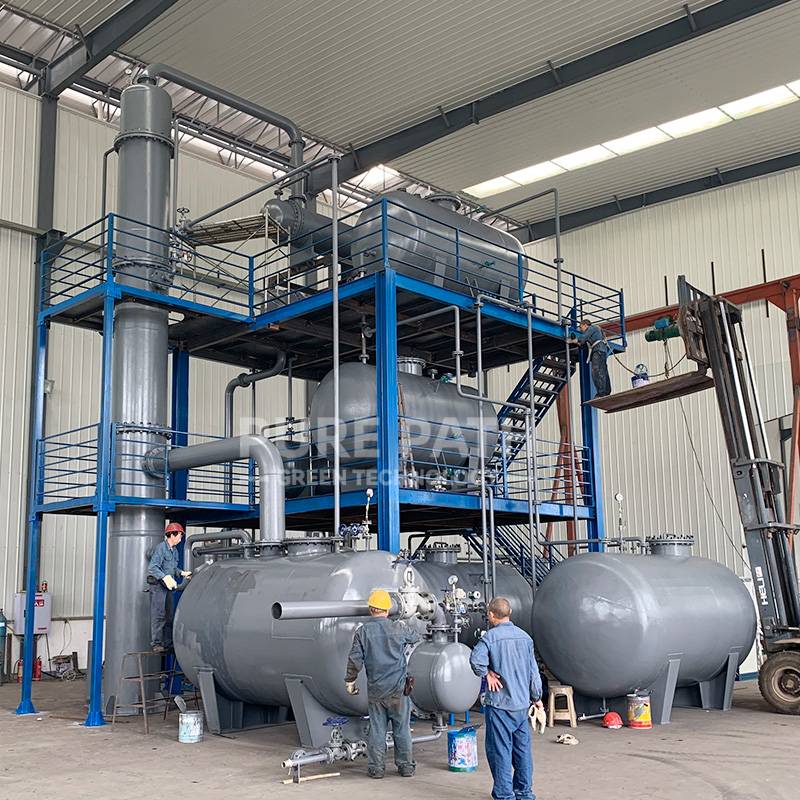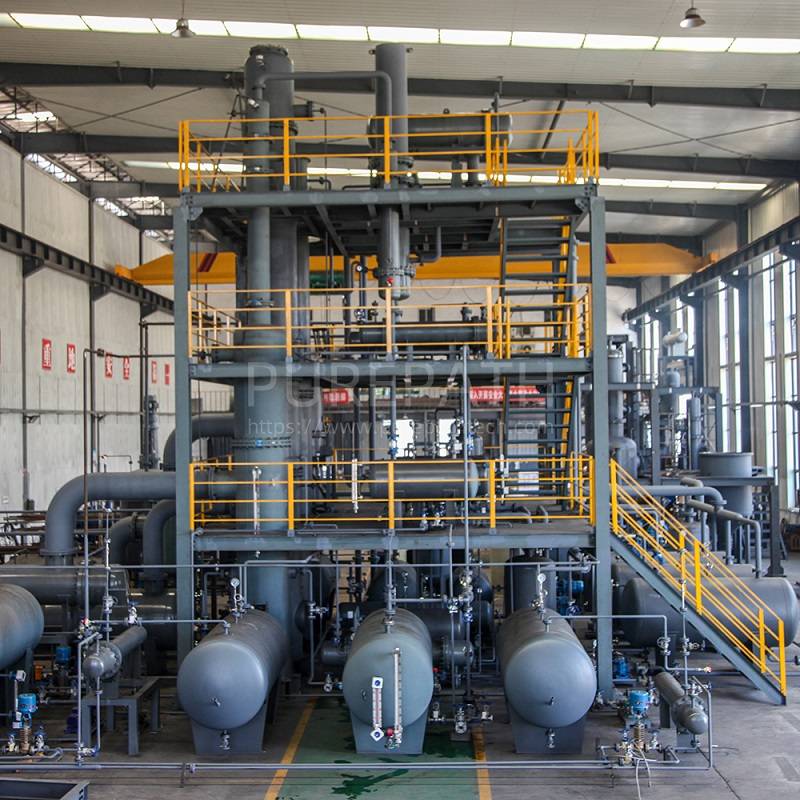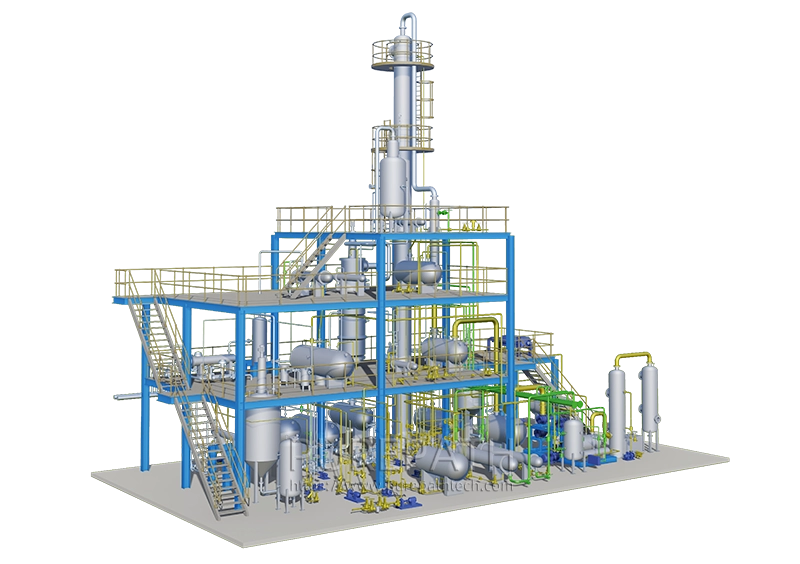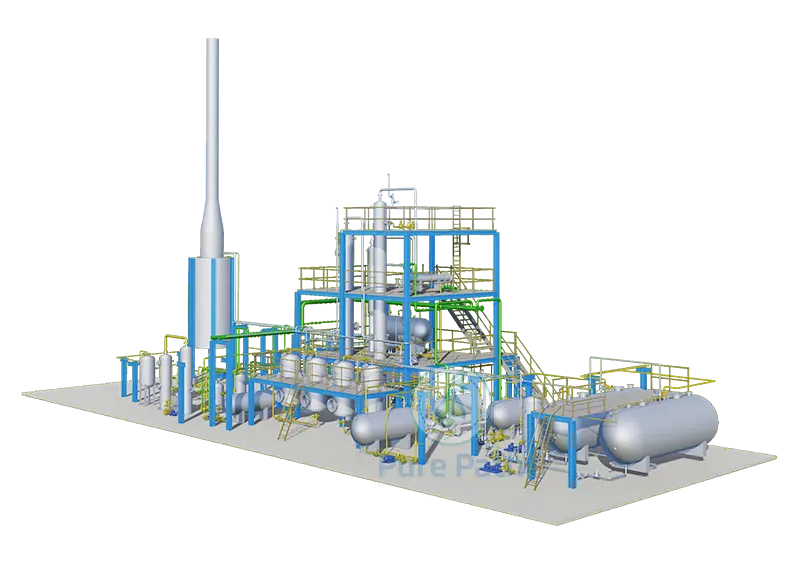The Challenges and Opportunities of Waste Oil Treatment
Waste oil, used lubricating oil generated from various industrial and automotive applications, poses a significant environmental threat if not managed responsibly. While waste oil recycling plants offer a solution by recovering valuable resources from used oil, the treatment process itself presents a set of challenges. This article explores the current hurdles in waste oil treatment, focusing on preventing secondary pollution, and examines the potential for a sustainable future through technological advancements and responsible practices.

Challenges in Waste Oil Treatment
The journey of waste oil from generation to responsible disposal involves several hurdles that can hinder its complete recovery and create new environmental concerns. Here’s a closer look at some of the key challenges:
- High Energy Consumption: Processing waste oil, particularly oil sludge, often requires high temperatures to separate oil from contaminants. This translates to significant energy consumption, raising both economic and environmental concerns.
- Secondary Pollution: During oil separation processes, particularly those involving thermal methods or harsh chemicals, there’s a risk of secondary pollution. This can include residual oil, especially heavy components, that are difficult to decompose and can contaminate soil and water. Additionally, some chemical treatment methods can generate hazardous waste products that require further treatment and disposal.
- Limited Waste Oil Recovery Rate: Current waste oil treatment technologies often struggle to achieve 100% recovery. Certain types of waste oil, like oil sludge, present unique challenges in the separation process, resulting in lower recovery rates. This not only represents a loss of valuable resources but also increases the volume of waste requiring disposal.
- Limited Utilization of Recovered Oil: Simple physical or chemical separation methods may not fully refine the recovered oil for optimal reuse. This limits the applications for the recovered oil, hindering its full potential as a valuable resource.
- High Processing Costs: Waste oil treatment involves various costs, including labor, materials, and energy. Chemical and biological treatment methods can be particularly expensive, making waste oil management a financially demanding process for some industries.
- Technical Complexity: Waste oil treatment can be a complex process requiring specialized knowledge and equipment. This complexity can lead to technical malfunctions and maintenance issues, further increasing the cost and challenges associated with treatment.
- Safety Risks: Waste oil is inherently flammable and can pose a fire or explosion hazard during collection, storage, and treatment. Implementing and maintaining stringent safety measures are crucial to minimize these risks.
- Legal and Regulatory Restrictions: Regulations governing waste oil management can vary depending on the location. Understanding and adhering to these environmental regulations and standards is essential for operating a compliant and responsible waste oil recycling plant.
- Rapid Technological Advancements: The emergence of new technologies like nanotechnology and biotechnology holds promise for improved waste oil treatment efficiency and recovery rates. However, integrating these cutting-edge technologies into existing infrastructure can be challenging and requires ongoing research and development.
- Low Social Awareness: Public awareness and understanding of waste oil recycling and its importance in environmental protection are often limited. This can lead to irresponsible disposal practices, increasing the burden on waste oil management systems.

Strategies for Preventing Secondary Pollution in Waste Oil Treatment
Minimizing secondary pollution during waste oil treatment is critical for achieving a truly sustainable approach. Here are some key strategies that can be implemented:
- Physical Treatment Techniques: As the first step in waste oil processing, physical methods like sedimentation, filtration, and distillation play a crucial role. Proper design and operation of these processes can significantly reduce the risk of secondary pollution by ensuring efficient separation of contaminants and minimizing the use of water or chemicals.
- Chemical Treatment Techniques: While chemical treatments address the removal of harmful substances from waste oil, it’s crucial to choose environmentally friendly chemicals and implement proper waste management practices for the used chemicals themselves. Additionally, optimizing treatment parameters and minimizing the use of excess chemicals can further reduce the risk of secondary pollution.
- Biological Treatment Techniques: Biological treatment methods utilizing microorganisms offer an eco-friendly approach to waste oil decontamination. However, strict control over microbial growth and the resulting byproducts is essential to prevent the generation of additional waste streams that require further treatment.
- Advanced Oxidation Techniques: These methods, including ozonation, photocatalysis, and electrochemistry, efficiently degrade organic matter in waste oil into harmless substances. While offering significant advantages, the high costs associated with equipment and operation may need to be addressed for wider adoption.
- Combination Processes: The most effective approach often involves combining various techniques like physical, chemical, biological, and advanced oxidation methods. Tailoring a specific combination process for the type of waste oil being treated optimizes recovery rates and minimizes the generation of secondary pollutants.
How to Prevent Secondary Pollution?
Beyond the specific treatment techniques, several preventive measures can be implemented to minimize secondary pollution throughout the waste oil management process:
- Strict Control of Treatment Parameters: Maintaining optimal operating conditions throughout the treatment process is crucial. This includes factors like temperature, pressure, and chemical concentrations. By closely monitoring and controlling these parameters, waste oil treatment facilities can minimize the formation of pollutants and optimize recovery rates.
- Optimized Treatment Processes: Designing streamlined waste oil treatment processes with minimal intermediate steps reduces the potential for contamination and minimizes the use of resources. Evaluating and optimizing existing processes can lead to significant improvements in efficiency and environmental impact.
- Use of Environmentally Friendly Chemicals: Prioritizing non-toxic or low-toxic chemicals for specific treatment steps whenever possible significantly reduces the risk of secondary pollution from chemical waste products. Investing in research and development of environmentally friendly alternatives can further contribute to sustainable waste oil treatment.
- Waste Oil Segregation and Collection: Segregating different types of waste oil at the source, such as used motor oil from industrial lubricants, allows for tailored treatment processes. This segregation prevents cross-contamination and optimizes the recovery process for each type of oil.
- Establishment of Robust Monitoring Systems: Implementing real-time monitoring of pollutant emissions during waste oil treatment allows for prompt identification and mitigation of any issues that could lead to secondary pollution. This includes monitoring air emissions, wastewater discharges, and solid waste generation.
- Strengthening Regulations and Standards: Stringent environmental regulations and standards for waste oil management play a vital role in ensuring responsible practices throughout the waste oil lifecycle. Regular inspections and enforcement mechanisms are crucial for ensuring waste oil recycling plants comply with these regulations.

Conclusion
Waste oil recovery presents a valuable opportunity to conserve resources, reduce environmental impact, and promote a circular economy. While challenges in current treatment processes exist, advancements in technology, coupled with responsible practices and effective regulations, offer a path towards a more sustainable future for waste oil management.







